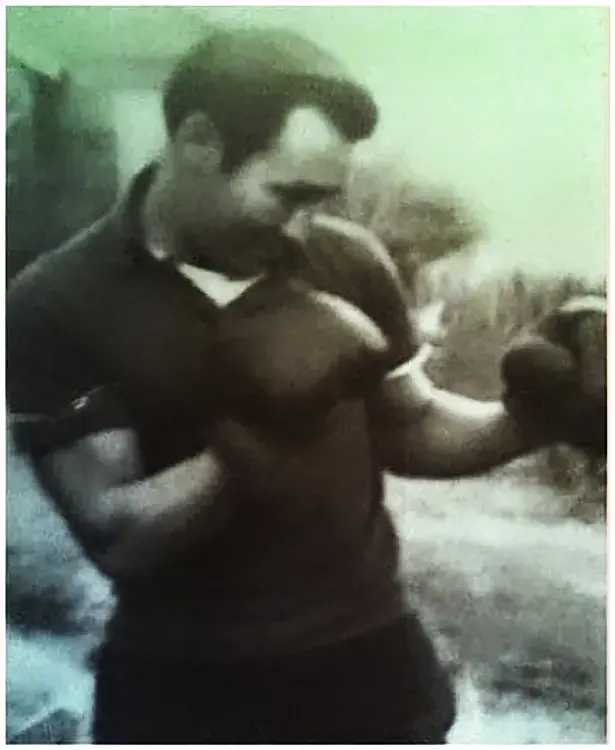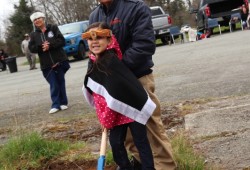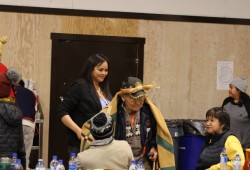On Friday, Aug. 16 hundreds packed Tseshaht’s Maht Mahs gymnasium to mark the passing of the First Nation’s eldest member.
At the age of 93 Cody Gus passed of natural causes on Aug. 7, still living on the property that had been in his family on the Tseshaht reserve for as long as he could remember. He was born March 16, 1931 to Gladys and George Gus on Nettle Island at the northern end of the Broken Group, which is recognized as the origin site of the Tseshaht.
The near century that followed encompassed a series of events that Gus lived through, wide-reaching developments that would eventually be considered historic for Port Alberni, British Columbia and Canada.
Gus had 10 brothers and sisters, and in an interview with Ha-Shilth-Sa earlier this year he recalled no electricity, telephones or wood for heat during his early childhood in the Broken Group, where the family would paddle amongst the islands.
By the time he was five Canadian law required the young boy to leave home to attend residential school, just as his siblings and parents had done. But in 1936 the closest residential school in Port Alberni had burned down – one of several fires that occurred during the institution’s history – meaning that Gus would instead be sent up the coast to Ahousaht. He ended up being the last surviving former student of the Ahousaht Indian Residential School, a Protestant-run institution that operated on Flores Island from 1904 to 1940.
After a year or two Gus was relocated to the newly rebuilt Alberni Indian Residential School, where he would stay for eight years. The hundreds who came to mark his passing gathered in Maht Mahs, one of the residential school’s two remaining structures. His time at the assimilationist institution was something that those closest to him rarely heard anything about.
“He never wanted his kids to know what happened to him or anything. The same with my mom,” said Cody’s daughter, Samatha. “They made an agreement when they got married and had children that they were not going to let us hear any of those stories.”
“We don’t really know what happened to them,” added Samantha. “He probably had his moments, but I don’t believe we’ve ever seen them.”
He preferred to tell stories about berry picking in Washington state, where his family would venture in the summertime to make some money.
“He said that was the best time of his life, going down there travelling with his family, meeting new people,” said Samantha. “They would make money and give it to their parents.”
Family members look back on Cody coming from a particularly tough generation, where people were expected to work and do what was needed. Cody’s three older brothers were drafted for military service during the Second World War, and he tried to get into the army as well.
“My buddy and I went down to Victoria to enlist but we got kicked out – I was only 14!” he laughed during an interview with Ha-Shilth-Sa in March.
Decades working in forestry followed for Gus, at a time when there was no shortage of opportunity for willing men on Vancouver Island. For 40 years he worked for MacMillan Bloedel’s Sproat Lake Division, including time operating a tugboat around the log booms that were across the Alberni Inlet from the Harbour Quay.
“He didn’t like it when anybody missed work or missed school,” recalls Samantha.
Cody’s brother Reginald worked with him around the log booms. In the ‘50s and ‘60s it seemed like every Tseshaht man had a job in forestry, recalled Reginald’s daughter Elizabeth Gus.
“All of them had jobs,” she said. “I don’t think there was such a thing as welfare then. So basically they had to work.”
In 1958 young Cody met Bertha Saxey from the Ka:'yu:'k't'h'/Che:k'tles7et'h' First Nations. This led to a marriage of nearly 60 years.
“My niece introduced me to her,” recalled Cody during the interview in March. “I fell in love.”
Cody insisted on being the family breadwinner during his long career in forestry. The couple had Samantha and Gloria, and raised another girl as a daughter, Angie Forsberg, whom they took in from family when she was an infant.
“They provided for us,” said Samantha of her parents. “My dad was very hard working.”
But this changed when Cody was forced to retire in 1992. The logging industry was declining, causing the Sproat Lake Division to close.
“My mom didn’t work for that whole time, he didn’t want her to work, but as soon as he retired she got a little part-time job in the evenings, janitorial,” said Samantha. “She was telling dad, ‘It’s my turn now to take care of you’.”
In 2020 Cody’s world was forever changed with Bertha’s passing. Left without his lifetime partner, Samantha and Gloria kept a close watch over their father, who insisted on living independently.
“He was lost. Me and my sister stepped up and took care of him,” said Samantha. “We’d get doctor’s appointments done and dinners ready so he could just warm up or put coffee on.”
Fortunately Cody was always active, and this lifestyle undoubtedly led to his longevity. He was a long-distance runner, a competitive boxer who had matches at the old Nanaimo civic arena, and in his senior years could often be seen taking long walks around Port Alberni.
“He liked to meet just anybody on the street,” recalled Samantha. “If he knew they were native, ‘Where are you from?’ He thought he might know them. He knew a lot of people from residential school.”
“He cared for everybody,” added Samantha. “He was always worried about his nieces or nephews or family members who were in the hospital.”
Cody was one of Tseshaht’s few remaining fluent speakers of Nuu-chah-nulth, although in this respect the influence of residential school appeared to still be present among elders of his generation.
“They spoke their language, but not in front of us,” said Elizabeth. “My dad never spoke it to us, but we knew that they spoke it.”
“They beat it out of them in the residential school,” commented Elizabeth’s sister, Yvonne. “The traditional thing that they really carried on was the bone game.”
Cody could often be found in Tseshaht’s old Somass Hall with his peers playing lahal, a betting game in which someone guesses where an opponent is hiding bones as a drum pounds.
“It’s a gambling game, trying to guess where the bones are,” remembers Elizabeth, who watched the men playing lahal when she was a child, betting a few dollars at a time. “That was their entertainment.”
With files from Denise Titian.




